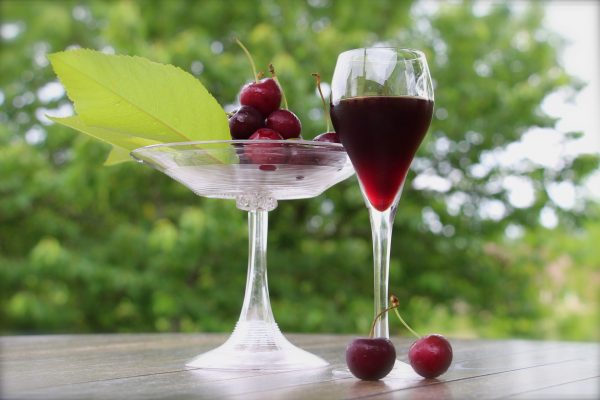

Ruby Ports retain their bright color because these wines are aged in barrel only for two to three years before bottling, thus minimizing any color change from oxidation. Both styles are made from the same blend of Douro red varieties, but Tawny ports are tawny in color because they are made from a blend of vintages that have been aged in barrels and gradually exposed to oxygen. The two basic styles of Port, Ruby and Tawny, also come in two basic colors, as noted by their names. The other styles of Sherry use various levels of controlled oxidation, resulting in various hues of amber. This layer protects the wine from oxidation, and thus any browning.

Fino and Manzanilla styles are clear to pale gold because of the benevolent film-forming yeasts, called flor, that make a floating seal on the surface of the wine. The colors of Sherry and Port are mainly the result of oxidation, or lack thereof. The different colors of most dessert wines come from the type of grape used and varying levels of oxidation during the winemaking process. What gives dessert and fortified wines their color? Fortified wines are fortified with neutral spirits to increase the level of alcohol, and, depending on the final style of wine desired, arrest fermentation while some level, high to low (or no), residual sugar remains. Other styles are made by letting the harvested grapes dry out (also concentrating sugars). In colder climates, the grapes may be allowed to freeze on the vine for the production of ice wine. These late-picked wines are, accordingly, often referred to as late-harvest wines. Often, a form of “noble” rot called botrytis plays a role, desiccating the grapes until only the very flavorful solids and sugars remain. How are dessert and fortified wines made?Īs mentioned above, many wines in this category-like Sauternes and Tokaji-are produced by leaving the grapes on the vine long after the rest of the harvest has been processed in order to accumulate very high sugar levels. Vermouth, an herb-infused fine wine, is today popular among mixologists and other dessert wines are derived, not from wine grapes, but from different fruits. Port can be most simply separated into Tawny and Ruby styles. Madeira is typically sweet but can be made into a dry style. Sherry comes in completely dry styles (Fino, Manzanilla, Amontillado, Palo Cortado) and also in a range of sweetness levels. What are the types and styles of fortified wine?įortified wines (meaning alcohol has been added during the winemaking process) include Sherry, Port, Madeira, Banyuls, Rutherglen and other very small-scale styles. The main examples include Sauternes (France), Tokaji (Hungary) and ice wine (Germany and Canada). The most straightforward method for making dessert wine is quite simply a late harvest of wine grapes, though further distinctions arise based on country of origin. What are the types and styles of dessert wine?ĭessert wines come in an impressive array of styles and sweetness levels.


 0 kommentar(er)
0 kommentar(er)
